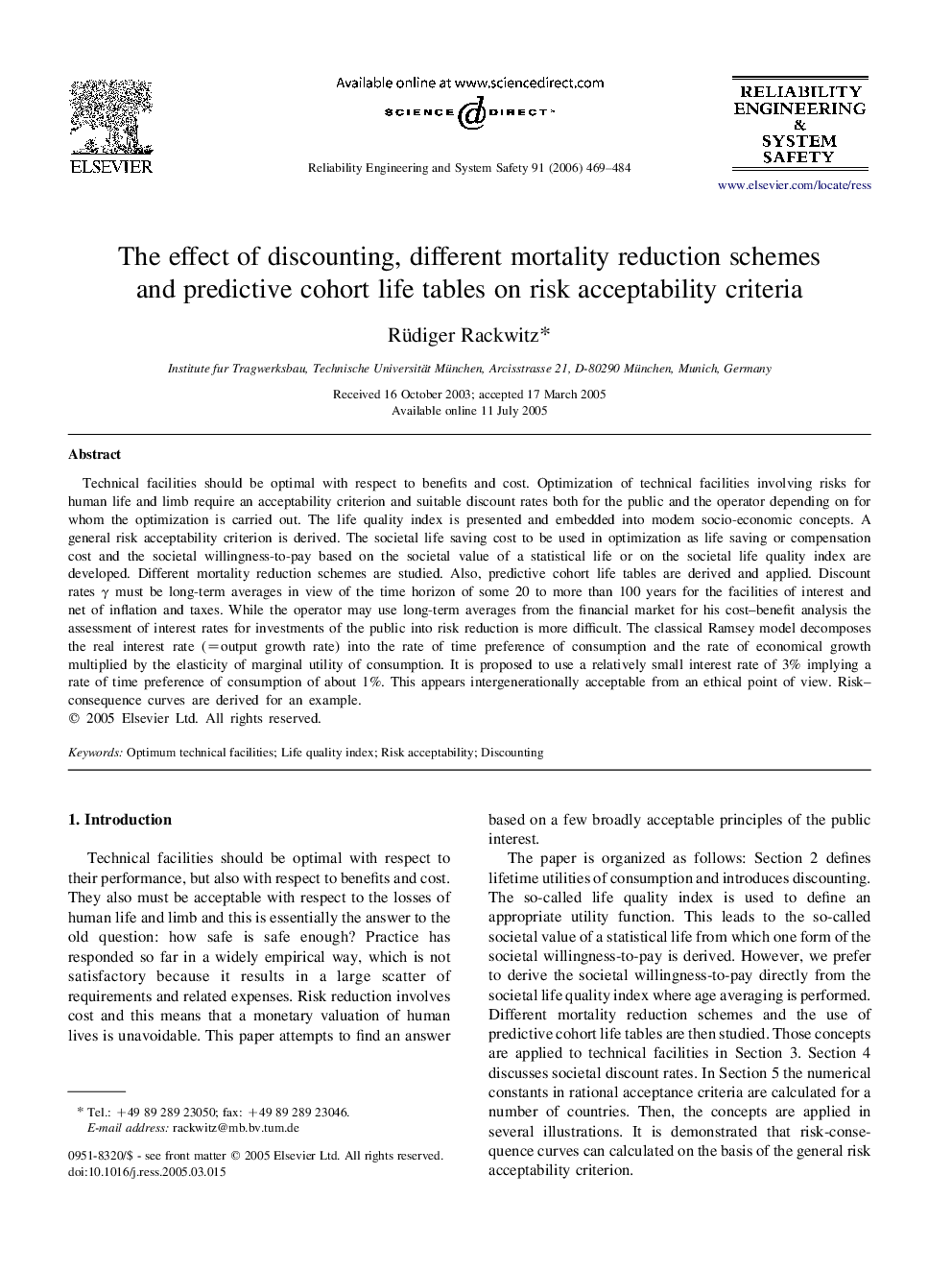| کد مقاله | کد نشریه | سال انتشار | مقاله انگلیسی | نسخه تمام متن |
|---|---|---|---|---|
| 803566 | 904673 | 2006 | 16 صفحه PDF | دانلود رایگان |

Technical facilities should be optimal with respect to benefits and cost. Optimization of technical facilities involving risks for human life and limb require an acceptability criterion and suitable discount rates both for the public and the operator depending on for whom the optimization is carried out. The life quality index is presented and embedded into modem socio-economic concepts. A general risk acceptability criterion is derived. The societal life saving cost to be used in optimization as life saving or compensation cost and the societal willingness-to-pay based on the societal value of a statistical life or on the societal life quality index are developed. Different mortality reduction schemes are studied. Also, predictive cohort life tables are derived and applied. Discount rates γ must be long-term averages in view of the time horizon of some 20 to more than 100 years for the facilities of interest and net of inflation and taxes. While the operator may use long-term averages from the financial market for his cost–benefit analysis the assessment of interest rates for investments of the public into risk reduction is more difficult. The classical Ramsey model decomposes the real interest rate (=output growth rate) into the rate of time preference of consumption and the rate of economical growth multiplied by the elasticity of marginal utility of consumption. It is proposed to use a relatively small interest rate of 3% implying a rate of time preference of consumption of about 1%. This appears intergenerationally acceptable from an ethical point of view. Risk–consequence curves are derived for an example.
Journal: Reliability Engineering & System Safety - Volume 91, Issue 4, April 2006, Pages 469–484